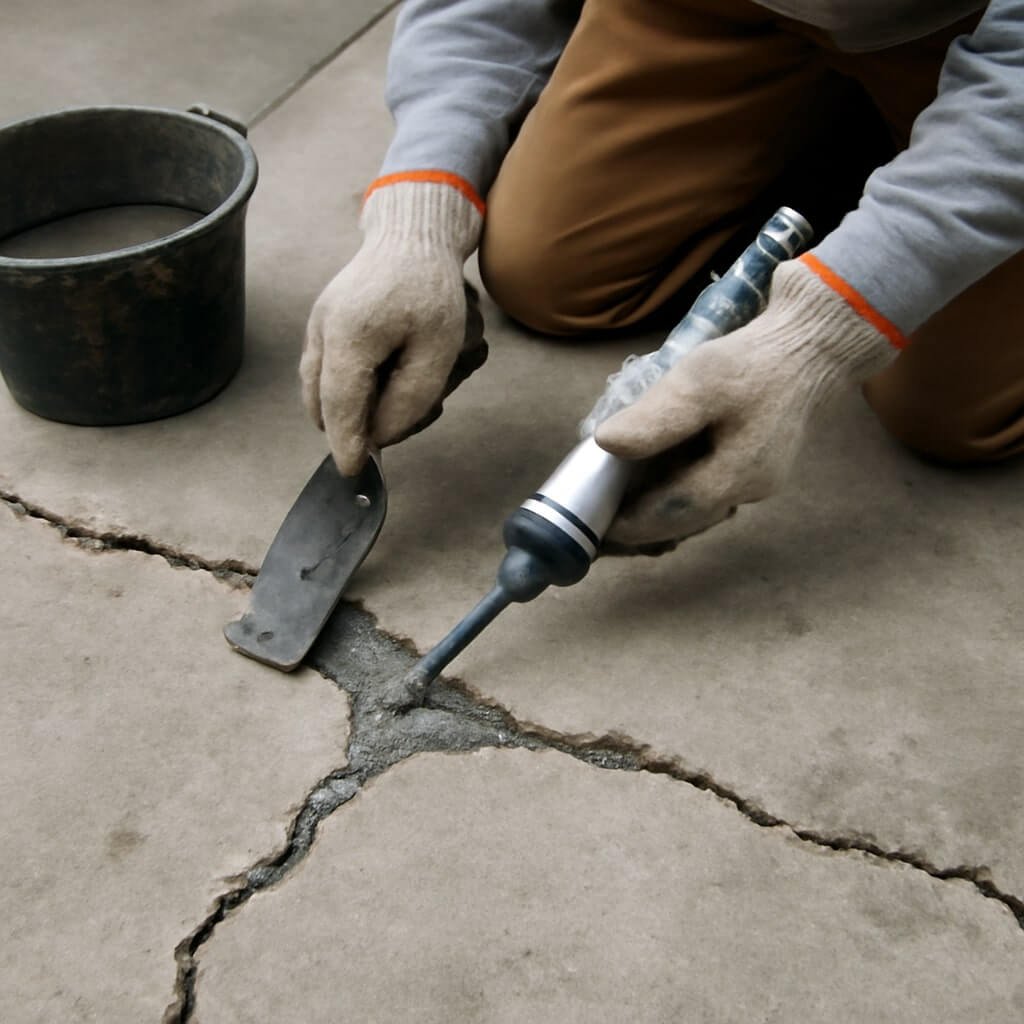Concrete is one of the most widely used building materials around the world, praised for its strength, versatility, and durability. But even the toughest concrete surfaces can develop problems over time, especially when exposed to weather, wear, or poor installation. Whether it’s cracking, spalling, discolouration, or other common issues, knowing how to fix common concrete problems step-by-step can save you time, money, and headaches.
This comprehensive guide walks you through ten essential solutions for repairing and maintaining concrete, so your surfaces stay strong and beautiful for years to come.
Understanding Common Concrete Problems

Before diving into repair techniques, it’s crucial to understand the most common problems concrete faces, their causes, and symptoms. This knowledge helps you diagnose issues accurately and choose the best repair method.
Cracks in Concrete
Concrete cracks can appear as hairline fractures or large splits. They may be caused by shrinkage during curing, settling of the foundation, temperature changes, or excessive loads. Identifying the type of crack — whether structural or surface — determines the appropriate repair approach.
Spalling and Scaling
Spalling is the breaking off of surface concrete, often caused by freeze-thaw cycles or corrosion of embedded steel. Scaling refers to flaking or peeling of the surface layer due to poor finishing or exposure to de-icing salts. Both can compromise the integrity and appearance of concrete.
Discolouration and Staining
Uneven colour or staining can occur from mould, rust, chemical spills, or poor curing conditions. While mainly cosmetic, these issues can detract from the aesthetic appeal of your concrete surfaces.
Step-by-Step Guide to Fixing Concrete Cracks
Fixing cracks properly extends the life of your concrete and prevents moisture infiltration or further deterioration.
Preparing the Surface
Start by cleaning the cracked area thoroughly. Remove dirt, debris, loose concrete, or vegetation from the crack using a wire brush or pressure washer. A clean surface ensures better adhesion for repair materials.
Choosing the Right Repair Materials
Different cracks require different repair compounds:
- Epoxy injections: Best for structural cracks to restore strength.
- Polyurethane foam: Ideal for cracks that need flexibility.
- Hydraulic cement: Quick-setting for small cracks and surface repairs.
- Concrete patching compound: For wider cracks and surface levelling.
Applying Crack Repairs
Follow the manufacturer’s instructions carefully:
- For epoxy, inject from the bottom up to fill the entire crack.
- For patching compounds, apply with a trowel and smooth out.
- Allow sufficient curing time to ensure durability.
Repairing Spalling and Scaling
Restoring damaged concrete surfaces involves careful preparation and application of repair products.
Surface Preparation
Remove all loose or broken pieces by chipping and cleaning the affected area. The surface should be rough and free of dust to ensure proper bonding.
Patch Repair Techniques
Apply a bonding agent if recommended, then use a high-quality concrete repair mortar or overlay to rebuild the damaged surface. Level and smooth to match the surrounding concrete.
Fixing Discolouration and Stains
Keeping your concrete clean and protected maintains its aesthetic appeal.
Cleaning Concrete Surfaces
Use mild detergents or specially formulated concrete cleaners to remove stains. For rust or mould, specialised chemical treatments might be necessary.
Sealing and Protecting Concrete
After cleaning, apply a concrete sealer to guard against future stains and moisture damage. Sealers also enhance colour and provide a protective layer.
Preventive Tips to Avoid Future Concrete Problems
Taking care of concrete proactively saves costly repairs later.
- Proper curing: Ensure concrete cures slowly and evenly.
- Control moisture: Avoid excessive water exposure and manage drainage.
- Regular maintenance: Clean surfaces and seal them every few years.
- Avoid heavy loads: Prevent placing heavy equipment on non-reinforced concrete.
Frequently Asked Questions (FAQs)
How soon can I walk on repaired concrete cracks?
Can I repair concrete cracks myself?
What causes spalling in concrete?
How do I prevent concrete from cracking?
Is sealing concrete necessary?
Can I use household cleaners to remove concrete stains?
Conclusion and Final Tips
Fixing common concrete problems step-by-step ensures your surfaces remain safe, functional, and visually appealing. By understanding the causes and using the right repair techniques, you can address issues quickly and effectively. Remember, regular maintenance and preventive measures go a long way in preserving concrete’s strength and beauty.



